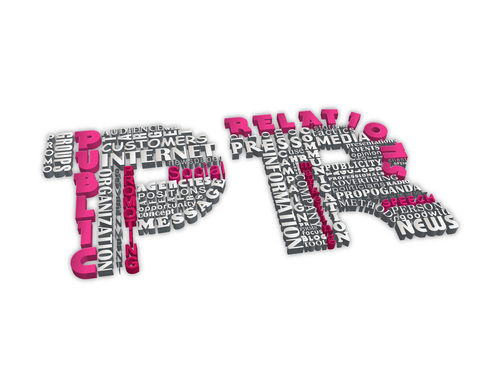With a reputation as a dark art, PR can be a daunting prospect for small businesses. But if you carve out some time and understand the process involved, it should be possible to manage your own campaign. Kate Warwick, director at communications agency PR Savvy, explains how through the ‘four Ms’.
Messaging
It’s hard work, but first make sure you have your messaging correct. What do you want to say and who do you want to say it to? Don’t try to be all things to all people. There’s an old advertising adage that if you throw four balls at someone, they’ll drop them all, but if you throw one, they’ll catch it.
Try to be clear and jargon-free. Remember to think about the benefits you offer your clients. Work at coming up with just two or three short messages. When you think you’ve got it, ask a mentor or business person outside of your industry to take a look. Do they understand what you do and how it would benefit them? If you can, find a friendly client who could give you a testimonial, or explain briefly what you’ve achieved for their business. This can really help to illuminate your offering.
Media #1
While you’re thinking about your messaging start a media review. Have a look online, or even in print, for places where you’d like your company to appear. Look for other companies of a similar size to yours. For example, if you’re a tech business with an offering for retailers, check out Retail Week and see what sort of news and features they publish, or whether they have a relevant supplement coming up. If you want to target consumers with a new product, is there a Can’t Live Without page you could provide an image for?
Don’t overwhelm yourself with contacts. An initial list of 10-15 publications can be fine. During this process work out which journalists are writing about which subjects. Identifying the right person to speak to can be half the battle.
If you’re a menswear company, don’t just write a list of all fashion journalists, but make a note of those who particularly write about men’s fashion. The editor of a national paper is unlikely to be interested in hearing from a small business, but the relevant section correspondent might be. On a trade publication, there might only be an editor and contributing journalists, so the editor might therefore be the first point of contact.
Materials
The standard format is a press release announcing your news, so make sure you have some. Having done your media review, you’ll know what journalists are interested in, but be aware that they are bombarded with press announcements. Make your communication short and clear. If your messaging is good, you should be able to get the news into the first two or three lines. You can then elaborate in a further paragraph and try to include a real quote from someone in the business. If you quote a third party (your friendly client) be sure to get their approval in advance. Finally, include contact details, corporate information and any image links at the very end.
Media #2
Building relationships with journalists can be a time-consuming process. Your contact list is important, but it doesn’t have to be extensive. Your media review will be useful here. Journalists and editors respond much more positively if you’ve read something they’ve written and worked out where you think your news could go in their publications. Give them a call and mention the column or article which alerted you to them. Ask if you can send them your news and email it promptly. Then hold back. It’s a journalists’ fob-off line, but they will get back to you if it’s of interest.
Never phone to ask if they’ve received it. Of course, they have. Email works. However, you can phone and ask if it was of interest, if they’d like photography, or if it wasn’t useful, why not. Even if you’ve done your homework, this part of PR is more like the sales process. You will have to call, leave messages, email, call again, try someone else. Be alert to the journalist’s feedback as this will help you get it right next time. And if a journalist asks for something, do it. Don’t wait a week. If it’s not possible, tell them and explain why. Courtesy and research go a long way in building good relationships with the media.
Media #3
Social media has become part of the PR’s toolkit. It can be overwhelming for a small business, but it is a useful promotional tool. Briefly, your press release can be adapted to become a blog on your website, LinkedIn can be used to highlight an event, new product or just engage with your peers. Video clips and images can bring news to life and journalists seem to love Twitter, so it’s a good way to see what’s going on in your sector. If everyone you follow is tweeting about their breakfast, try unfollowing them and trying someone more interesting or relevant. Get your whole team involved, start slowly and use it to get a better understanding of what makes your key contacts tick.
Momentum
You may not land a double-page spread with your first press release, so build up some momentum by planning a series of announcements. Speaking opportunities, exhibitions, seminars, product launches can all be used to keep your company top of mind with your key journalists. It doesn’t have to be often, but it should be regular. At its most direct, public relations is about telling the story of your business through the established media and via social media outlets. It takes time and effort, but small businesses can certainly take this on themselves. At the very least this effort will put you in a good position if you do decide to appoint an agency.
Small businesses not managing PR effectively
Almost half of small and medium-sized enterprises (SMEs) expect to increase PR expenditure in 2013, but the vast majority are lacking the knowledge, strategy and tools to make the most of their investment.
While the majority of businesses are using Twitter (65 per cent), Facebook (63 per cent) and LinkedIn (60 per cent), most do not issue news releases and more than 70 per cent don’t maintain any form of media contact list, according to a survey by Mynewsdesk.
SMEs are clear about the benefits of PR, with 76 per cent seeing raising brand awareness and reinforcing brand messages as the primary benefit, followed by increasing sales (16 per cent) and driving online traffic (11 per cent).
However, 87 per cent of businesses admit that they lack a PR strategy of any sort, operating instead on an ad-hoc basis (57 per cent), or without any plan at all (30 per cent).
More than three quarters of SMEs also lack any sort of media area that journalists can access. As a result the overwhelming majority (79 per cent) fail to include any image or video content with their news releases.
Mynewsdesk CEO Peter Ingman says that while SMEs have the right intentions, many are not getting the most from their investment.
‘The survey clearly shows that, while SMEs are keen to try and manage their own PR and engage with their audience online, the vast majority are failing to do so in an effective manner and are not getting the basics right.
‘This could be for any number of reasons, not least that non-PR professionals may find it overwhelming to manage the many channels of communication that are relevant to modern public relations.
‘Whilst widespread Internet access and the rise of social networks have made it easier to communicate directly and share content, the results of the survey suggest businesses must first consider whether they are equipped to construct an effective PR strategy themselves.’





